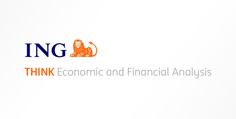The oil market continued to strengthen yesterday as concern over the demand impact from the Omicron variant starts to fade. Brent managed to rally more than 3.4%, taking it back above the U.S.$75/bbl mark. Although, the prompt Brent time spread has not seen the same sort of strength as the flat price.
The latest trade data from China shows that crude oil imports over November increased by 15% MoM to average 10.21MMbbls/d over the month. However, volumes were still down 8% YoY. While YTD imports are still down more than 7% YoY. Refined product exports from China totaled 4.19mt over the month, an increase of more than 6% MoM. However, volumes are still down more than 15% YoY. Lower export quotas and a tighter domestic products market have weighed on Chinese oil product exports.
Numbers from the API overnight show that {{ecl-75||U.S. crude oil inventories fell by 3.1MMbbls over the last week. However, whilst we saw this fairly large draw, crude oil inventories at Cushing increased by 2.4MMbbls, while gasoline and distillate fuel oil inventories increased by 3.7MMbbls and 1.2MMbbls respectively. The refined product builds more than offset the total crude drawdown. Therefore the report was neutral to slightly bearish.
The EIA also released their Short Term Energy Outlook yesterday, where estimates for U.S. oil production were left unchanged for both 2021 and 2022. The EIA sees U.S. oil production in 2022 growing by 780Mbbls/d to average 11.9MMbbls/d. And that is after falling by an estimated 170Mbbls/d in 2021.
Metals
Positive signs from China sparked some optimism across the metals complex. Stronger-than-expected trade data for November, combined with signs from Monday's Politburo of an easing in curbs on the property sector, rekindled some confidence toward China’s metals demand. This has seen iron ore and the steel sector continue to recover due to their large exposure to the construction sector. After iron ore consumption plunged over 2H21 due to aggressive steel cuts, improved margins at steelmakers have promoted a round of iron ore restocking, which has sent prices back above U.S.$110/tonne. However, there is still the risk of further steel cuts in a bid to cut air pollution ahead of the Winter Olympics.
Aluminium rallied yesterday with some risk premium coming from the news that a major power provider in Iceland is set to cut power supply to its consumers, including aluminium smelters. It is not yet clear what the exact impact will be on smelters. Nevertheless, it is a fresh reminder of the risks to supply in Europe amid the ongoing tightness in energy markets, along with the higher energy demand seen over the winter.
As for nickel, LME 3M prices returned to U.S.$20,000/tonne due to continued tightness in the class-one market with declining LME inventories. The market may have received another boost yesterday on the back of reports that researchers in Hong Kong are said to have developed the world's first stainless steel that kills the COVID-19 virus. This may prompt momentum buying due to optimism over potentially stronger demand for stainless steel and nickel.
Agriculture
CBOT Soybean traded softer yesterday following China’s import numbers. While soybean imports increased 68% MoM to 8.57mt in November, a large part of this increase reflects a recovery in U.S. flows following Hurricane Ida-related disruptions during September and October. However, imports were still down 10.6% YoY and reflect relatively soft demand for the oilseed. Weaker crushing margins and soft demand from the animal feedstock industry have weighed on soybean demand this year. China’s YTD soybean imports have fallen 5.5% YoY to 87.7mt.
